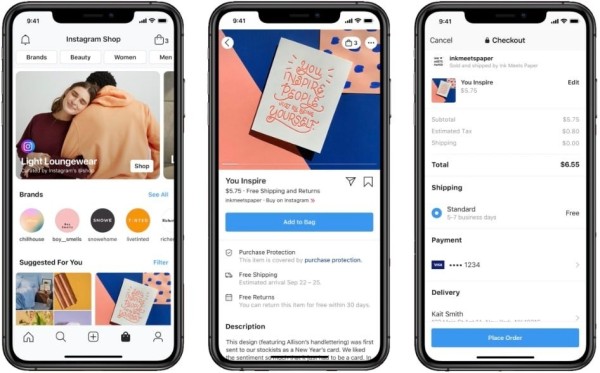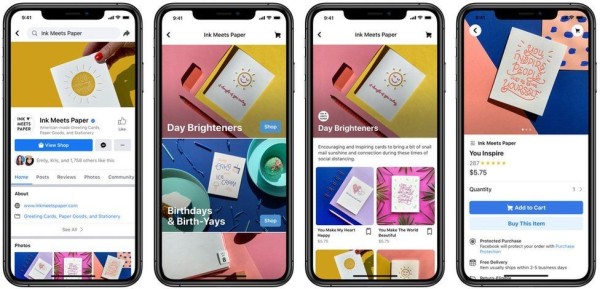Social commerce: what is it, does it work and when in the Netherlands?

by Bart Reijven.
Social commerce, a term you come across more and more often. If we are to believe Facebook and Google, social commerce is going to be "the next big thing". The possibilities in the Netherlands are still very limited, but if we look across the Atlantic Ocean, the prospects are promising. Right?
I see social commerce as one of the international trends for this year. But what exactly is social commerce? And when are the big tech giants going to delight Dutch consumers and sellers with their innovation?
What is social commerce?
Let me start with the dry definition of social commerce:
"Social commerce is the process of showing, promoting and selling products directly on social media."
The term "social commerce" originated in 2005. Yahoo! describes social commerce as "a collection of social tools to support online shopping". These include shared shopping lists, user reviews and user generated content (reviews and tips) to supplement product information. Using these tools, shoppers get "advice from trusted individuals who can then buy them quickly and confidently".

In America, consumers can already shop in the Instagram shop.
A good example is Facebook. We are already used (often to great irritation) to its rich display of ads. But in the States, Facebook has already rolled out its Shops functionality, giving sellers access to Facebook and Instagram as a sales channel. In the Netherlands we still have to make do with Marketplace (on Facebook) and referrals to external web shops (on Facebook and Instagram).
Why social commerce?
Sounds all too good to be true, but why use social commerce at a launch in the Netherlands? I've described the benefits for both buyers and sellers.
Benefits for buyers
- Easily read experiences and opinions of others.
Social media are an excellent platform for you to give your honest opinion about (recent) purchases. It is therefore also extremely interesting to read these experiences and reviews during the orientation process. - Discover what interests your influencers.
While we know that influencers get paid for posting content, it still influences our view on brands and products. The effect is proven: influencer marketing is booming, especially on social media; - Contact the seller directly and personally.
Social media sets the tone for getting in touch with the seller in a more personal way. Good-bye to that boring contact form, hello conversation; - Engage your connections in your orientation and buying process.
Consult with friends, form an opinion together and buy within a few clicks; - Identify with (the purchase of) a brand.
By making a purchase, buyers feel even closer to a brand. Even more reason to show off purchases and receive confirmation from friends afterwards. - Buy quickly and confidently.
Buying a popular (or touted by your influencer) product within a few clicks is now possible.
Benefits for sellers
- Be right where your target audience is.
Millennials and Generation Z (ages 18 to 34) in particular are avid social media users. According to research, more than 30% say they want to buy items directly on Facebook, 27% on Instagram and 20% on Twitter;
Target your marketing even more specifically. The ability to show your ads to a specific audience is a wet dream for every online marketer; - Position your brand effectively and personally.
Social media gives you the opportunity to build your brand through targeted ads, personalized communication messages, the use of appropriate influencers and personalized tone-of-voice from your customer service representatives; - Gain and enjoy high exposure.
By deploying targeted ads and building followers, you increase your exposure at a rapid pace. - Receive valuable insights.
As mentioned earlier, reviews within social media tend to be more sincere and straightforward. This is a perfect tool to gain valuable insights and improve your services and products. - Enjoy a short sales funnel.
The customer goes through a relatively short journey because everything (from social interaction to product purchase) is managed within one platform; - Benefit from a booming sales channel.
Researchers predict that e-sales will exceed €600 billion in the next three years.
Social commerce platforms
What exactly are the largest social commerce platforms in the world? As mentioned, our cold little country is still in for a rude awakening. But if we look at China and (especially) America, we see beautiful and promising innovation.
Facebook and Instagram
Facebook has been working on social commerce for some time. In early 2020, it launched Facebook Shops in America. In Shops, companies can create stores for Facebook and Instagram. Facebook Shops is the collection of online shopping features released on both social platforms over the years. These include Facebook Marketplace, Instagram Shopping, Native Checkout and Live Video Shopping. Facebook has not yet mentioned concrete dates to roll out to other countries.

Even within Facebook itself, American users are already able to make purchases.
Does social commerce really work?
Is social commerce going to overshadow traditional e-commerce? The truth is simple: more people are turning to social media for product recommendations and reviews.
According to MarketingWeek, 56% of those surveyed like and follow brands on social media to see products. Another 35% do so to get ideas for the next time they shop. But do people really want to do their shopping on social media? According to this particular study from a few years ago, not really.
Another study, conducted among social media users aged 16 to 64, found that only 9% of respondents were interested in using Facebook's buy buttons. Statista's 2018 survey found that a whopping 82% of online consumers in America have not purchased products directly through social media.
Yet another study found that only 35% of millennials are "likely" to purchase through Facebook. Only 24% said they would be interested in a Twitter buy button. According to this study, both Twitter and Facebook have claimed that about half of their users come to their sites to buy products they can buy.
But why do these numbers contradict each other so much? In my opinion, it's because we still don't have a clear definition for "social commerce." Some sources include transactions with social media as a traffic channel under "social commerce". Others (including me) think that the transactions should also take place on the social platform.
Is social commerce for you?
That's the big question. The social media giants are now first in line, only TikTok makes concrete statements about a rollout to the Netherlands. The rest are keeping their jaws firmly shut. In the meantime, we are keeping a close eye on this social commerce revolution.

read more






